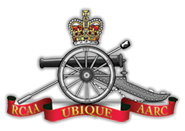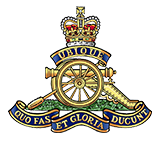The Cold War 1948-1992
By 1948 it had become apparent to Western nations that the Soviet Union was a direct threat to their security and was intending to attempt to dominate Europe either by direct military action or subversion. Canada reacted by maintaining a large armed forces in peacetime for the first time in our history. In 1951, the Government also decided to station forces overseas with NATO as a deterrent, another peacetime first. These forces included an artillery regiment. The Cold War would see hundreds of thousands of Canadians serve in the Armed Forces. It is Canada’s third most costly conflict to date, resulting in the service related deaths of over 1,200 military personnel, including 14 Gunners. By the end of 1951, the post-war organization of the Active Force artillery had undergone several changes.
In 1949, 71st Regiment RCHA reverted back to its wartime designation of 1st Field Regiment RCHA. In 1950, it had under command the 1st Light Battery (Paratroop) RCA, which later became Z Battery, which was armed with 75mm pack howitzers and 4.2-inch mortars. A growing emphasis on air defence due to the emerging Cold War and the threat of Soviet bombers resulted in the formation of four composite anti-aircraft batteries through the conversion of the 127th Anti-Tank Battery and the 128th HAA and 129th LAA Batteries together with the authorization of the 119th Composite AA Battery. In addition, the RCSA East Coast was re-designated the 49th Coast Battery RCA. This left the three schools of artillery in Shilo, Picton and Esquimalt.


